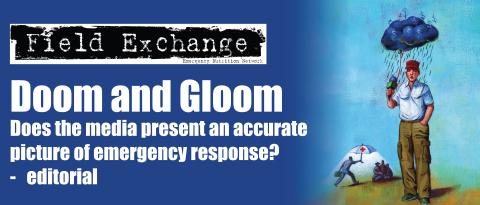Update on en-net discussions

By Tamsin Walters, en-net Moderator
This is a summary of some of the 'hot' discussion topics on the online forum, en-net, www.en-net.org.uk since the last issue of Field Exchange.
Over the 3 months November 2009 to January 2010, 12 questions have been posted on en-net, eliciting 50 responses. Eight of those questions were in the Assessment thematic area. Popular topics were accurate measurement and interpretation of MUAC and issues of survey/study design, with a particular emphasis on effective sampling procedures to provide meaningful results.
Questions on appropriateness of different survey methodologies to support various objectives were explored. These included possibilities for analysis and use of data from surveys over large geographical areas with multiple livelihood zones, e.g. stratified approaches such as DHS/MICS (UNICEF) approach. The temptation with this type of survey to make comparisons between districts/livelihood zones within the survey may lead to false conclusions and incorrect assumptions as sample sizes are often too small in each stratum to provide a representative estimate, unless accurately estimated at the outset. The objectives of a survey are of utmost importance when considering the design. It is all too common for practitioners to overload survey questionnaires to try and capture as much information as possible. This increases the likelihood of a reduction in the quality and reliability of the data, as surveys become lengthy and time-consuming for both interviewee and survey team. Many of the 'additional' variables collected in surveys are little used afterwards. In addition, it is often difficult to comment usefully on causality of malnutrition using contextual survey data. Whilst Forum Moderators attempted to get an input from UNICEF on the MICS approach, unfortunately none has yet been forthcoming.
Changes to the guidance for measuring mid-upper arm circumference (MUAC) and the proposed abandonment of the '10 steps' approach were raised. The discussion highlighted the challenges and complexities inherent in a seemingly simple measurement and its interpretation. Discrepancies in measurements between community referral staff and those admitting children for programmes can result in rejected referrals, affecting both coverage and community participation. Historically some of the ten steps, such as using the left arm, were adopted from experience measuring MUAC in adults and have since been thought less essential for children. WHO investigations found no evidence of improvements in precision/reproducibility where measurers were using the 10 steps approach in comparison with a quick, rough estimation of the mid-point of the upper arm. However it appears that the importance of the 10 steps was not formally assessed prior to the agreement to abandon them. The same measurers tend to assess pregnant and lactating women for programme entry as well as children. It would therefore seem advisable to use one method for both groups if feasible and to ensure that the method which provides the most accurate measurements is supported. Thorough training and supervision remains an essential ongoing requirement for programmes using MUAC. Appropriate width and materials for bands, as well as the use of plain versus coloured straps and the development of pressurised straps are all areas of continued research and development.
en-net now has approximately 300 subscribers, 29 of whom joined between November 2009 and the end of January 2010. Over this 3 month period, the site received a total of 2,216 visitors (although a bounce rate of 61% suggests that 864 were 'genuine' visitors), averaging 2:35 minutes browsing time per person and notching up 7,263 page views.
In March, a new area to en-net was added for 'Discussions' to enable people to raise issues that are broader than, or do not fit neatly within, specific thematic areas. We hope this will encourage some interesting debates on topics which span the humanitarian agenda, with a focus on nutrition in context as a component of the broader endeavour.
Contribute to the en-net questions/discussions by visiting www.en-net.org.uk or click on the link on the ENN home web-page.
Imported from FEX website


